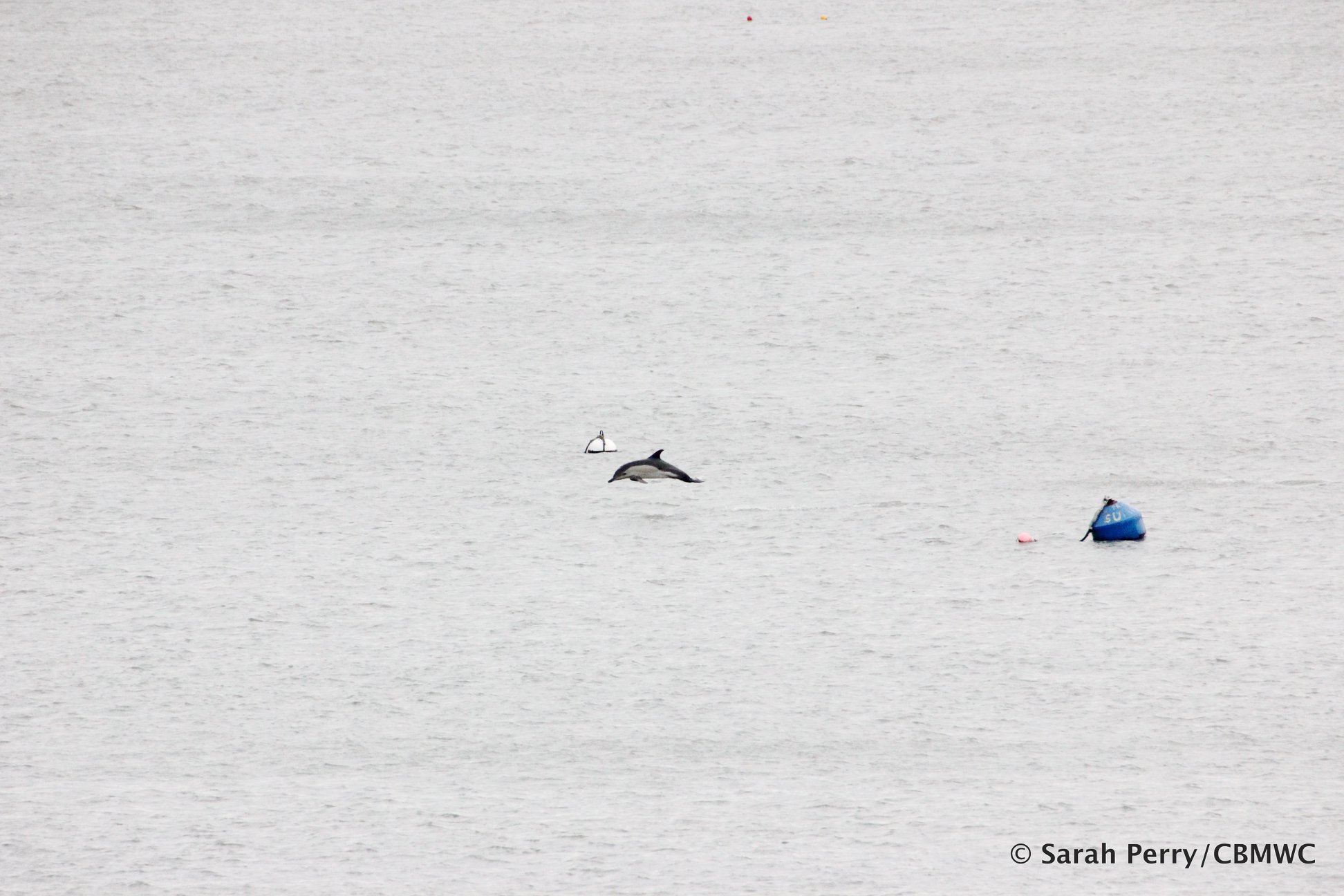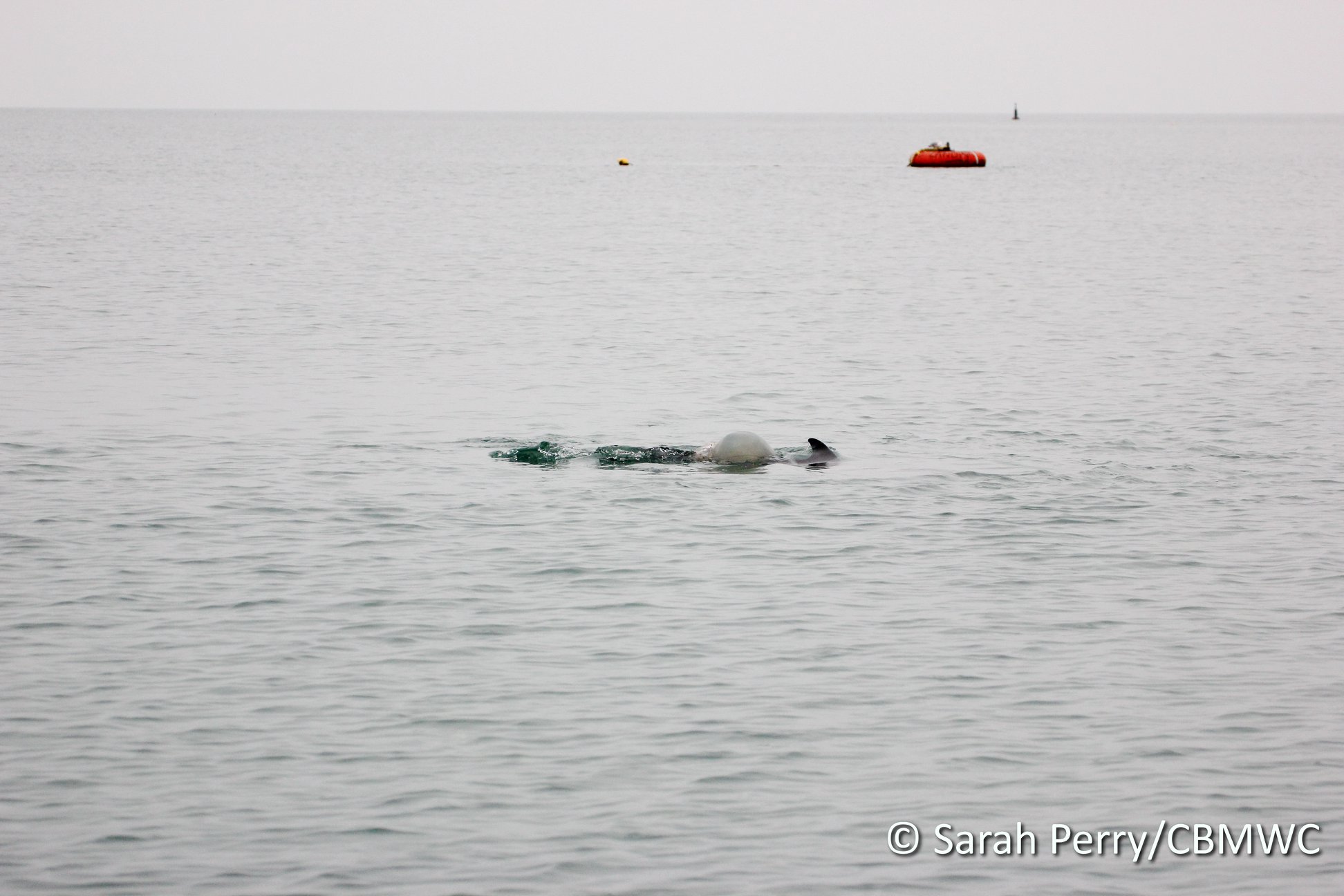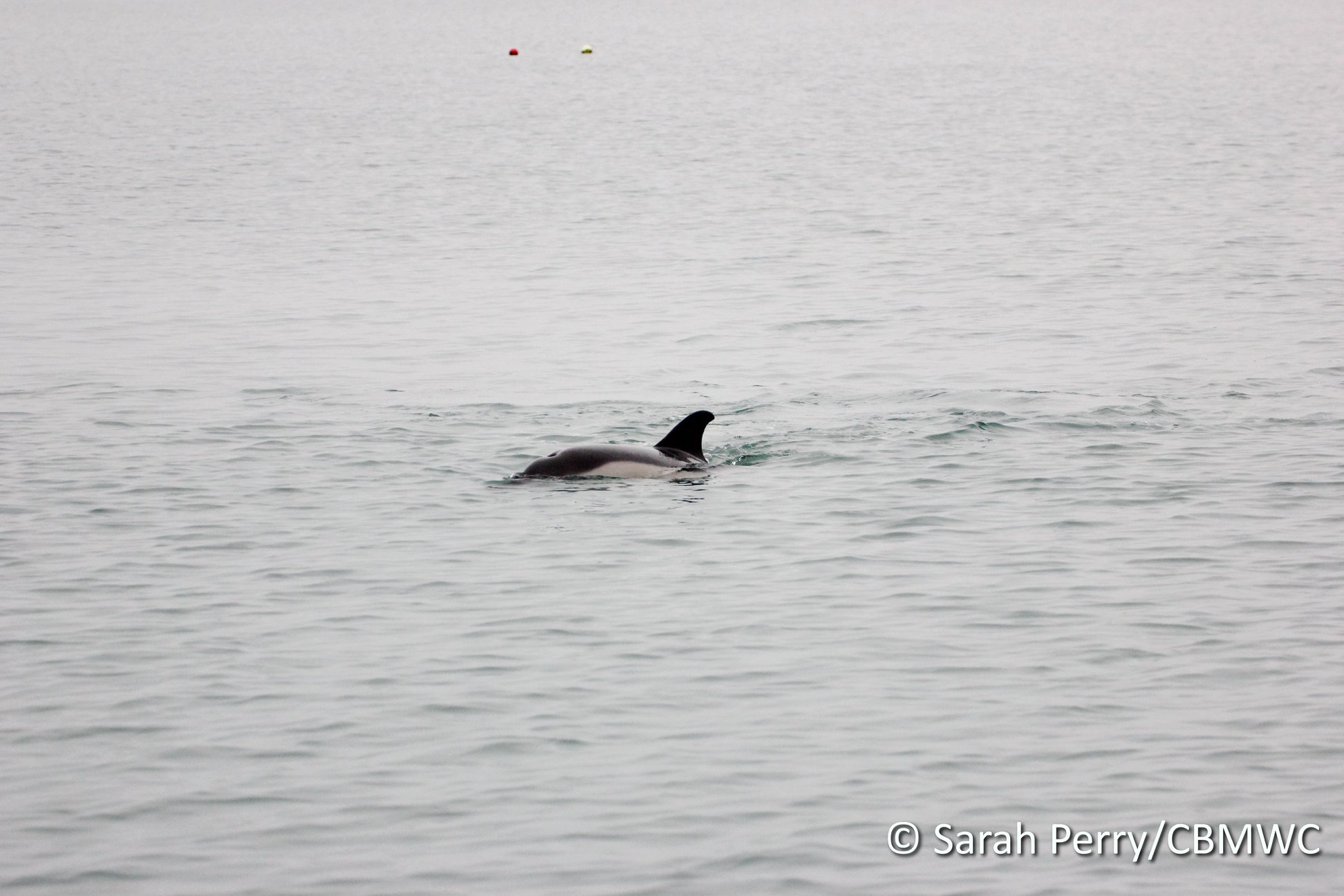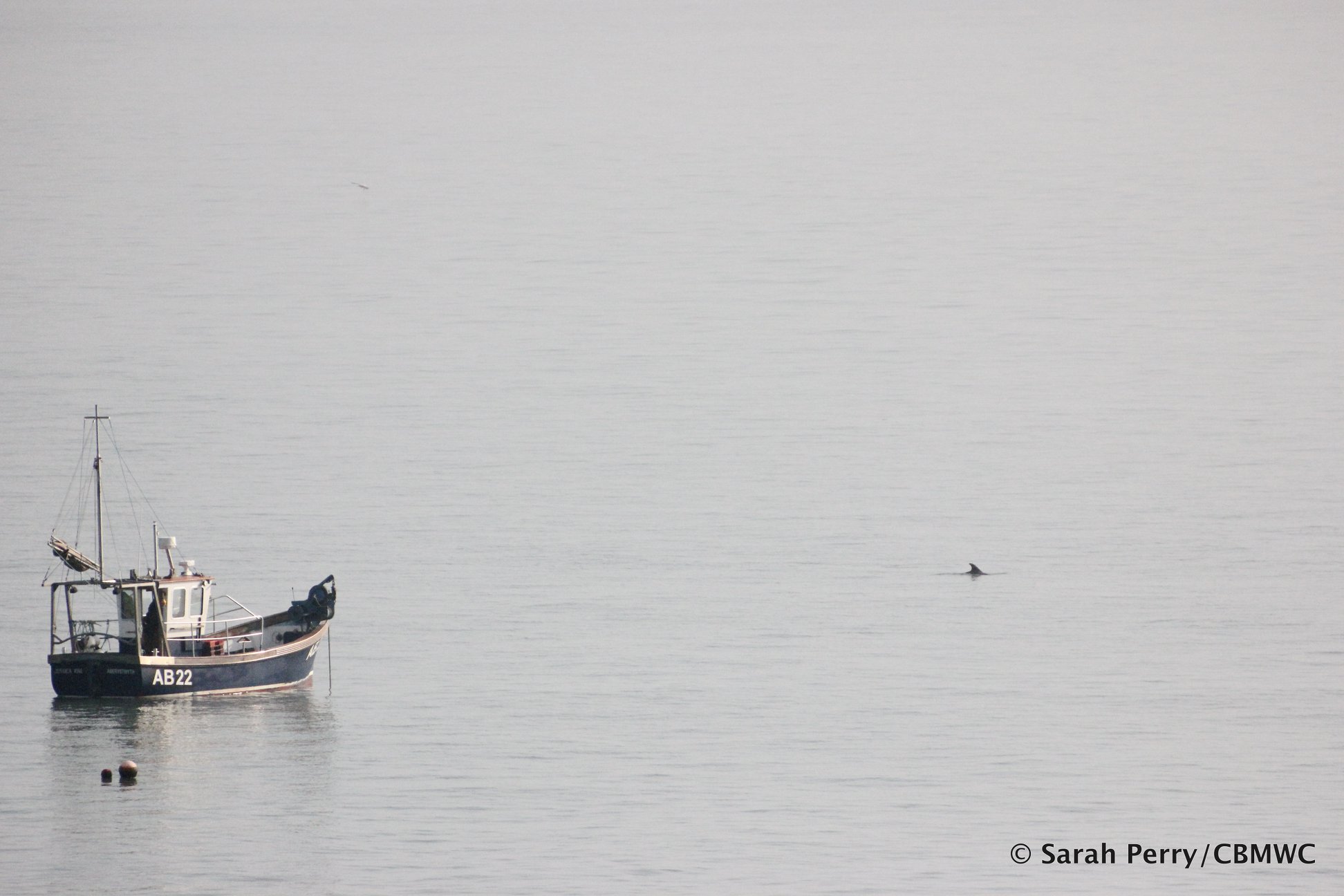Gellir lawrlwytho cynnwys at ddefnydd anfasnachol, megis defnydd personol neu ar gyfer adnoddau addysgol.
Ar gyfer defnydd masnachol cysyllwch yn uniongyrchol gyda deilydd yr hawlfraint os gwelwch yn dda.
Read more about the The Creative Archive Licence.
Disgrifiad
Cafodd y dolffin hwn, a enwyd yn ‘Daily’, ei weld am y tro cyntaf yng Ngheinewydd ar 28ain o Ragfyr 2014, ac fe'i gwelwyd ddiwethaf ar 15ed o Ebrill 2015. Mae'r testun isod wedi ei gymryd o erthygl bapur newydd a ysgrifennodd Dr Sarah Perry, Rheolwr Prosiect Moroedd Byw Cymru ar y pryd ar gyfer Canolfan Bywyd Gwyllt Morol Bae Ceredigion.
“Since early January the marine team at the Cardigan Bay Marine Wildlife Centre (CBMWC) have been monitoring an unusual occurrence in New Quay Bay.
The unusual occurrence being the presence of a dolphin! Yes a dolphin, what’s so unusual about a dolphin in New Quay you might ask – well this animal is not a bottlenose dolphin (Tursiops truncatus), the species of dolphin that we would normally expect to see in New Quay, but an entirely different species, a short-beaked common dolphin (Delphinus delphis) that we have affectionately named “Daily”, due to its apparently daily occurrence in the waters here.
Although short-beaked common dolphins are not unusual in their occurrence in the Irish Sea, it is unusual to see these animals in the shallow inshore waters of Cardigan Bay and even more unusual to spot this species of dolphin in the waters around New Quay. On a couple of occasions over the last few years we have recorded the presence of common dolphins off New Quay headland, a passing occurrence during one of our summer shore-based surveys, as well as recording a group of common dolphins further out into Cardigan Bay during one of our research surveys. These inshore sightings of common dolphins during the summer are unusual to say the least and the presence of a common dolphin in the waters off New Quay during the winter is even more unusual.
Common dolphins recorded off the west coast of Wales are more frequently sighted during the summer months, found in deeper waters, such as those found off the Pembrokeshire coast. They are occasionally sighted from the WTSWW Islands of Skomer and Skokholm and further offshore out into the Irish Sea and out towards the Celtic deep, a deep stretch of water between Wales and Southern Ireland. Common dolphins generally prefer deep water and are a gregarious species of dolphin, often found in large groups, sometimes reaching thousands in just one area. Groups this large usually comprise of several subgroups (20-30 animals) all coming together where ideal feeding opportunities occur. They are opportunistic feeders and are known to feed on a variety of fish species including pelagic schooling fish such as mackerel, herring and sprat.
Common dolphins (see photo) are very different in their appearance to that of the regularly sighted Cardigan Bay bottlenose dolphins (see photo) and are much smaller than bottlenose dolphins. Adult common dolphins reach lengths of about two metres, whilst an adult bottlenose dolphin reaches up to 4 metres in length. They are fast moving and streamlined in their shape and have a beautiful, distinct hourglass pattern of white, grey and yellow on their sides
The first known reports of the animal in New Quay are from a member of the local community whom spotted the animal on the 28th December 2014; it appears the animal has remained in the area ever since and we have been documenting its occurrence here.
We have carried out some background research and have not found any well-documented evidence of other occurrences of solitary short-beaked common dolphins, that have stayed in one particular area for extended periods of time around the UK. We are not sure why the animal is here, or how long it will remain in the area, but ironically whilst it is here, we are lucky enough to be able to spot it from both our office windows and our visitor centre (which will be opening at Easter) so we are able to continue to keep an eye on its occurrence and document its presence in the area. So far we have been lucky enough to watch it interacting with large barrel jellyfish (Rhizostoma pulmo) as well as performing the occasional leap! Since its arrival, we’ve had at least one known visit into New Quay bay from a group of bottlenose dolphins, perhaps lucky enough for the common dolphin there were no interactions between the two species and the bottlenose did not stay around for long. However, if it stays in the area for much longer there will almost inevitably be an interaction between the two species, to what extend and what the outcome of that interaction will be is entirely unknown. As the spring and summer draw closer we hope that the animal makes its way offshore into deeper waters where it would normally be found, away from any potential disturbance and where it will find other common dolphins to join up with.”
Disgrifiad: Stori (erthygl bapur newydd) a ffotograffau i gyd-fynd â hi (10) o ‘Daily’'r dolffin yng Ngheinewydd, Ngheredigion.
























Oes gennych chi wybodaeth ychwanegol am yr eitem hon? Gadewch sylwad isod
Sylwadau (0)
Rhaid mewngofnodi i bostio sylw